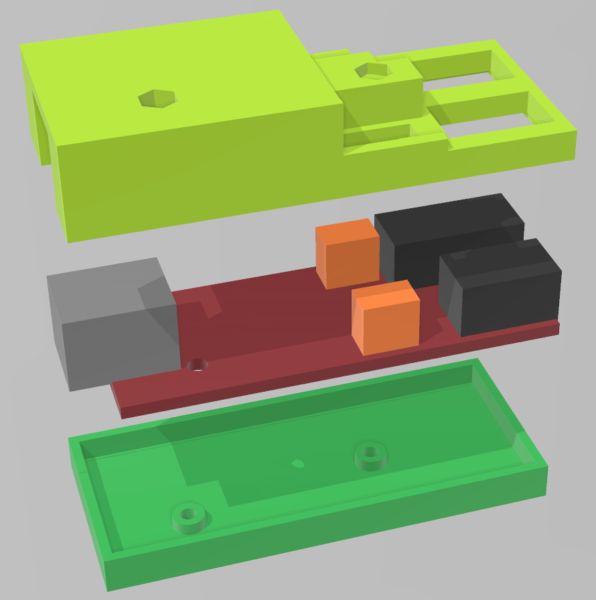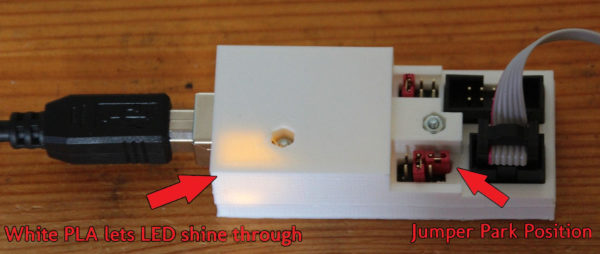Quick Thing: Case for Diamex All-AVR Programmer
The Diamex/Tremex All-AVR programmer for ATmel microcontrollers comes as “naked” populated PCB, no case, no protection against shorts or other damage. I created a case for it, with the following design criteria:
- Protection against accidental shorts as good as possible.
- Easy access to the jumpers that control the various operation modes.
- “Park position” for the jumper that de/activates the external power (since it is often in “off” position and can easily be lost).
- LED signals need to be visible.
- Uses the existing mounting holes.
Here’s the result (in theory – created in Windows 3D builder):

Here’s how it looks in reality:

So using white (or transparent) plastic is enough to make the LED signals visible. Works nice!
Get the model files here or from Thingiverse. The screws to put it together are M2×18 mm with matching nuts.
A Few Words on the Product
The programmer itself caught my attention after I “bricked” an ATtiny 45 by disabling the Reset-pin, which I did because I wanted to use it as I/O pin. That’s basically OK, but I was then unaware that this renders ISP-programming impossible. To program such a MCU again, you need to use the High Voltage Serial Programming (HVSP) method, which requires different connections, a different protocol and the short application of 12V to the Reset pin to start HVSP. The Diamex All-AVR claims that it can provide 12V for ATtiny chips. However, the documentation is a bit unprecise – it is correct that the All-AVR can provide 12V, but this is to program the even smaller ATtiny 4/5/9/10 chips via yet another programming method, the Tiny Programming Interface (TPI). I reached out to Diamex, but they claim that it is not possible to alter the firmware of the programmer to support HVSP. I doubt that it is really impossible, but I doubt that I can get them to discuss this with me.
If you start looking closer, there’s a zoo of different programming methods for the ATmel MCUs – a good overview can be found here. So look closely before you buy your programmer!
Do I regret buying the Diamex All-AVR? Not really. It is not too expensive, it works directly off the Aduino IDE, and it is really fast. Also, it can provide an external clock signal for MCUs where you accidentily switched off the internal clock and do not have an external oscillator in the circuit.
I even got the thing operational using Bascom under Windows 10, which is a bit tricky, and I do not remeber the steps 100% any more. If you are interested, contact me, I’ll try to get the steps together.
For my “bricked” ATtiny MCU I will investigate other methods – the one that currently attracts me most is this one.
Alternative Case
rophos created another case for this. To me it looks like the jumpers are buried a bit too deep, but protection against shorts will be better here.
